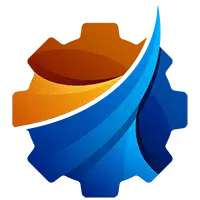Content optimization

Content is king – this statement will never lose its relevance. Creating valuable, unique, and informative content is the foundation of your website's success on Google. Keep in mind a few essential aspects:
Keywords: Research and identify keywords relevant to your industry. Incorporate them naturally into your content, titles, headers, and meta descriptions. However, avoid overstuffing content with keywords, as it might be interpreted as spam.
Uniqueness: Produce original content that delivers value to readers. Steer clear of copying content from other sources, as Google rewards authenticity.
Structure: Divide your content into short paragraphs, use headers (H1, H2, etc.), employ lists and bullet points to facilitate navigation and comprehension for readers.
Technical optimization

It's not just about content – proper technical optimization is equally vital.
Responsiveness: Your website must be responsive, adapting to different devices and screen sizes. This is a significant factor for ranking, as Google favors mobile-friendly sites.
Loading Speed: Lengthy loading times can discourage users and impact your search result position. Optimize images, choose fast hosting, and minimize unnecessary code.
URL Structure: Your URL should be clear and reflective of the page's content. Avoid long and unreadable links.
Links and social signals

External links and social signals are crucial factors influencing your site's authority in Google's eyes.
Backlinks: Build a healthy backlink profile by acquiring links from other credible sites. These links act as recommendations and enhance your site's value.
Social Signals: Being present on social media not only expands your reach but can also contribute to better search result visibility.
Image and multimedia optimization
Images and multimedia are important visual elements of your site but can affect its performance.
Image Compression: Before adding images to your site, optimize them through compression. This helps maintain fast loading speeds.
Alt Text: Include alternative descriptions (alt text) for images, which not only assist visually impaired users but also help Google understand the image content.
Monitoring and analysis

The entire optimization process is meaningless without regular monitoring and analysis of results.
Google Analytics: Utilize tools like Google Analytics to track site traffic, traffic sources, and user behavior.
Search Console: Google Search Console is a tool that helps you monitor your site's indexing and identify potential issues.
In conclusion, effective Google visibility results from the combination of valuable content, technical optimization, and building authority through links. Keep in mind that this process requires patience – results might become evident over time. By following the above strategies, you can increase your chances of better Google search result rankings and attract more traffic to your website.

